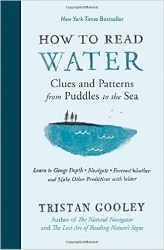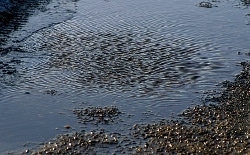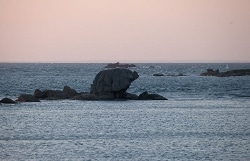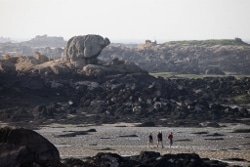Molecule of mystery…
Author: Tristan Gooley
 You might think he’s a wizard. If you didn’t know better, it would be easy to mistake Tristan Gooley’s ability interpret the subtlest ripples and waves for a supernatural power. But no magic is required to navigate one’s way through the natural world of water. Based on many years of experience traveling the globe by land, sea and air, the man reveals many of his aquatic secrets in How to Read Water. It’s an astonishing testimony to the power of simple observation.
You might think he’s a wizard. If you didn’t know better, it would be easy to mistake Tristan Gooley’s ability interpret the subtlest ripples and waves for a supernatural power. But no magic is required to navigate one’s way through the natural world of water. Based on many years of experience traveling the globe by land, sea and air, the man reveals many of his aquatic secrets in How to Read Water. It’s an astonishing testimony to the power of simple observation.
In addition to his many popular books about the natural world, Gooley is also famous as the only living person to have both sailed and flown across the Atlantic Ocean solo. In this book he analyzes liquid water from every angle. Puddles, eddies, currents, swell and tides all come under his shrewd and detailed analysis. From duck wakes to the global movement of the tides, his exploration encompasses a vast expanse of knowledge. Clearly obsessed, the man devotes his life to learning and educating others in observational techniques that are in danger of being lost due to our continued reliance on computer technology to find our way in the world. Whether he’s explaining the finer points of lighthouse codes, navigating by the stars or interpreting lugworm turds, Gooley is consistently engaging.
In some of the best parts of the book the author describes many of the secrets of the Polynesians, the greatest natural navigators the world has ever known. Their ability to travel vast expanses of the wide open Pacific based on currents, clouds and animal behaviors was nothing short of astounding. With numerous entertaining anecdotes, Gooley reveals how he’s used many of these techniques during his own travels. He makes it clear that shrewd observation is the key to living a full life, inspiring an almost philosophical reverence.
While I live near some small bodies of water, I think How to Read Water is put to its best use on the open sea. Ideally, one would read the book in the safety of their warm abode and then read it a second time during a month long trip on a well-equipped and comfortable sailing vessel. Maybe on a trip around South America or a lengthy exploration of the Caribbean. But even if an ocean voyage isn’t in your near future, the book will still entertain as it reveals myriad remarkable natural observations. Moreover, it’s an amazing look inside the mind of a navigational master that left me curious for much more.
— D. Driftless
puddle photo by Malene Thyssen (CC BY-SA 3.0)/Normandy photos by Pmau (CC BY-SA 4.0)
[AMAZONPRODUCTS asin=”1615193588″]
- Best Non-Fiction of 2016 - February 1, 2017
- Little Free Library Series — Savannah - May 22, 2015
- Little Free Library Series — Wyoming - November 30, 2014





